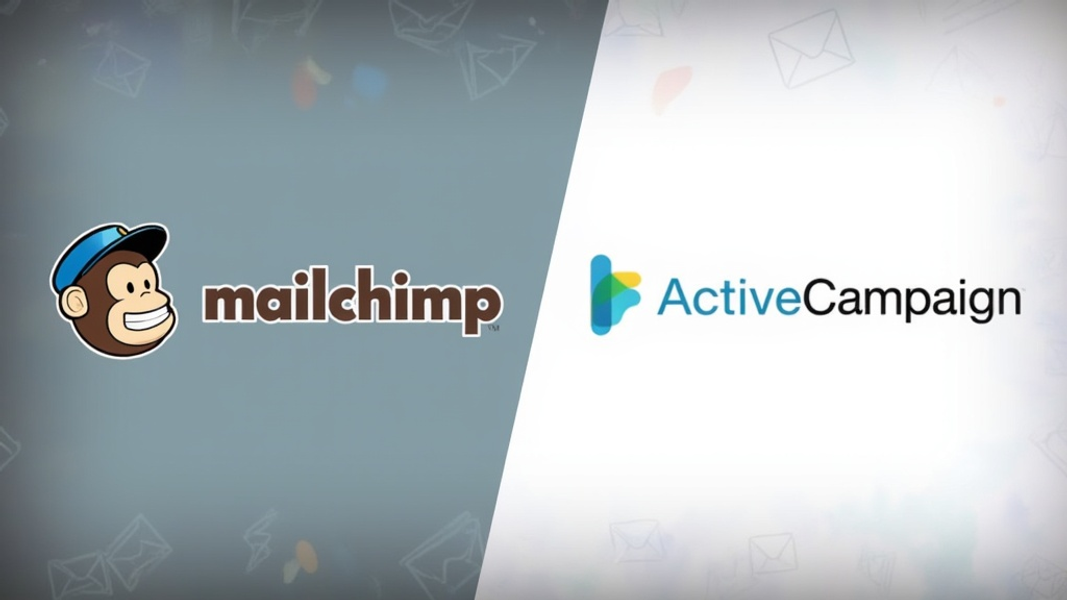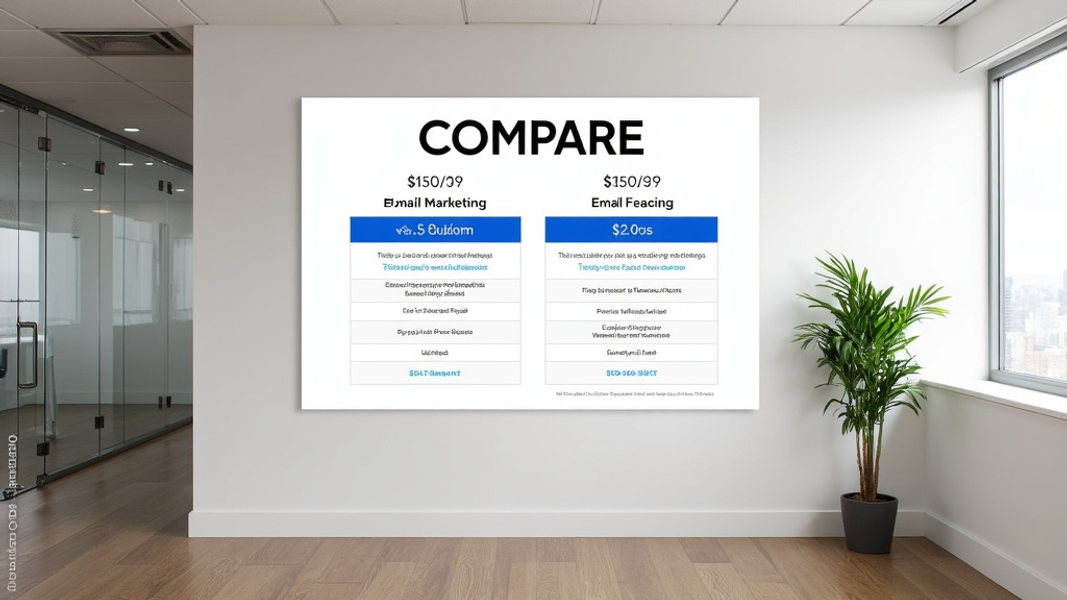
Email marketing remains a key tool for businesses to connect with customers. Two popular platforms, Mailchimp and ActiveCampaign, offer different features to help companies reach their audience. This comparison will help you decide which platform fits your needs best.
Overview of Mailchimp and ActiveCampaign
Mailchimp: The User-Friendly Giant
Mailchimp started in 2001 and has grown to serve over 12 million users. It's known for its easy-to-use interface and free plan, which makes it popular with small businesses and startups. Mailchimp's strength lies in its simplicity, allowing even those new to email marketing to create and send campaigns quickly.
The platform has expanded its features over time, adding basic automation and simple CRM tools. However, it still focuses on being accessible to users who might not have much technical experience. This approach has helped Mailchimp maintain its position as a go-to choice for businesses just starting with email marketing.
ActiveCampaign: The Automation Powerhouse
ActiveCampaign, founded in 2003, has built a user base of over 150,000. It's known for its advanced automation features and robust CRM capabilities. This focus on more complex tools has made it a favorite among growing small and medium-sized businesses, as well as marketers who need more control over their campaigns.
The platform offers deep integration between its email marketing, automation, and CRM features. This integration allows businesses to create more personalized and targeted campaigns based on customer behavior and data. While it might take more time to learn, ActiveCampaign provides tools that can grow with a business as its marketing needs become more complex.
Ease of Use
Mailchimp's Simple Approach
Mailchimp prides itself on being easy to use. Its drag-and-drop email builder is intuitive, allowing users to create professional-looking emails without design skills. The campaign creation process is straightforward, with clear steps from start to finish.
Mailchimp's dashboard is clean and easy to navigate. New users can quickly find what they need, whether it's creating a new campaign, checking reports, or managing subscribers. This simplicity is a big part of why many small businesses choose Mailchimp when they're just starting with email marketing.
ActiveCampaign's Power User Focus
ActiveCampaign offers more features, which means it has a steeper learning curve. Its interface is clean and modern, but the sheer number of options can be overwhelming at first. The platform's strength lies in its powerful automation builder, which allows for complex, multi-step campaigns.
For users willing to invest time in learning the platform, ActiveCampaign offers more control and customization. It's designed for marketers who want to create detailed, behavior-driven campaigns. While it might take longer to get started, many users find the extra features worth the initial time investment.
Email Design and Templates
Mailchimp's Template Library
Mailchimp offers over 100 pre-designed templates. These templates cover a wide range of industries and purposes, from newsletters to product announcements. The designs are professional and modern, giving users a solid starting point for their campaigns.
Customization options in Mailchimp are basic but sufficient for most users. You can change colors, fonts, and layouts within the templates. All designs are mobile-responsive, ensuring emails look good on any device. For users who want more control, Mailchimp allows custom HTML templates, but this feature is limited to higher-tier plans.
ActiveCampaign's Flexible Design Options
ActiveCampaign provides more than 250 responsive email templates. These templates offer more flexibility in design customization compared to Mailchimp. Users can make detailed changes to layouts and styles, allowing for more unique designs.
One of ActiveCampaign's strengths is its support for custom HTML templates across all plans. This feature is valuable for businesses with specific branding requirements or those who want to create highly customized email designs. The platform also offers a wider range of design elements and blocks that can be added to emails, giving users more creative freedom.
List Management and Segmentation
Mailchimp's List-Based System
Mailchimp uses a list-based system for managing contacts. Each list is separate, which can be helpful for organizing different types of subscribers. However, this system has drawbacks. If a subscriber is on multiple lists, they count as separate contacts, which can increase costs.
Mailchimp offers basic segmentation options. Users can create segments based on subscriber data, engagement, and behavior. The platform also uses tags and groups to further organize contacts. While these tools are sufficient for basic targeting, they might feel limited for users who need more advanced segmentation.
ActiveCampaign's Tag-Based Approach
ActiveCampaign uses a tag-based system for contact management. This approach is more flexible, allowing users to organize contacts in multiple ways without duplicating them. Tags can be added or removed automatically based on subscriber behavior, making it easier to keep contact information up-to-date.
The platform offers advanced segmentation capabilities. Users can create complex segments using a combination of tags, custom fields, and behavioral data. This level of detail allows for highly targeted campaigns. ActiveCampaign's system is particularly useful for businesses that want to send personalized content based on specific customer actions or characteristics.
Marketing Automation
Mailchimp's Basic Automation
Mailchimp offers basic automation workflows that are easy to set up. Users can create simple sequences like welcome emails or birthday messages. The platform provides pre-built automation templates for common scenarios, which is helpful for users new to automation.
However, Mailchimp's automation capabilities are limited compared to ActiveCampaign. The conditional logic options are basic, which means complex, multi-step automations can be challenging to create. For many small businesses, these basic automations are sufficient, but growing companies might find them restrictive over time.
ActiveCampaign's Advanced Automation
ActiveCampaign's automation capabilities are where the platform truly shines. It offers a visual workflow builder that allows users to create complex, branching automations. These can include multiple triggers, conditions, and actions, enabling highly personalized customer journeys.
The platform supports behavioral-based automations, which can trigger emails or actions based on specific customer interactions. This level of detail allows businesses to create highly targeted campaigns that respond to individual customer needs and behaviors. While it takes more time to set up these advanced automations, they can significantly improve engagement and conversion rates.

CRM and Sales Features
Mailchimp's Basic CRM Functionality
Mailchimp offers basic CRM features as part of its platform. Users can track customer interactions and purchase history within the tool. This integration of marketing and basic sales data can be helpful for small businesses that don't need a full-fledged CRM system.
The platform provides limited pipeline management tools. Users can track deals and customer stages, but the features are not as comprehensive as those found in dedicated CRM software. Mailchimp's strength in this area is its integration with e-commerce platforms, which allows for easy tracking of online sales and customer behavior.
ActiveCampaign's Full-Featured CRM
ActiveCampaign offers a more robust CRM system that's fully integrated with its email marketing and automation features. The platform provides tools for managing deals, tracking customer interactions, and visualizing sales pipelines. This integration allows businesses to create marketing campaigns that directly support their sales processes.
One of ActiveCampaign's standout features is its sales automation capabilities. Users can set up automated tasks, emails, and other actions based on deal stages or customer behavior. The platform also offers lead scoring and win probability features, which help sales teams prioritize their efforts on the most promising opportunities.
Reporting and Analytics
Mailchimp's Clear, Simple Reports
Mailchimp provides clean, easy-to-understand reports on campaign performance. Users can quickly see key metrics like open rates, click rates, and unsubscribes. The platform also offers basic A/B testing features, allowing users to compare different subject lines or content to optimize their campaigns.
For e-commerce businesses, Mailchimp offers performance tracking that shows how email campaigns directly impact sales. While these reports are sufficient for basic analysis, they might not provide the depth of information that more data-driven marketers require.
ActiveCampaign's In-Depth Analytics
ActiveCampaign offers more detailed reporting and analytics tools. Users can dive deep into campaign performance, analyzing not just basic metrics but also how different segments responded to campaigns. The platform's advanced split testing options allow for more complex experiments, testing multiple variables at once.
One of ActiveCampaign's strengths is its goal tracking and attribution features. Users can set specific goals for their campaigns and see how different marketing actions contribute to achieving those goals. This level of detail helps businesses understand the full customer journey and optimize their marketing efforts accordingly.
Integrations
Mailchimp's Wide Range of Connections
Mailchimp offers over 300 native integrations with popular tools and platforms. These integrations cover a wide range of categories, from e-commerce platforms to social media tools. This broad compatibility makes it easy for businesses to connect Mailchimp with their existing tech stack.
The platform's integration with e-commerce platforms is particularly strong, allowing for seamless tracking of customer purchases and behavior. Mailchimp also integrates with Zapier, which extends its connectivity to thousands of other apps and services.
ActiveCampaign's Deep Integrations
ActiveCampaign boasts over 850 app integrations, providing even more options for connecting with other tools. The platform offers deep data integrations with major platforms, allowing for more detailed data sharing and synchronization.
One of ActiveCampaign's advantages is its API access, which allows for custom integrations. This feature is particularly valuable for businesses with unique needs or those using specialized software. The platform's extensive integration options make it a good choice for businesses with complex tech ecosystems.
Pricing
Mailchimp's Tiered Pricing Model
Mailchimp offers a free plan for up to 2,000 contacts, which is generous compared to many competitors. This plan includes basic features and is suitable for small businesses just starting with email marketing. Paid plans start at $11 per month and increase based on the number of contacts and features needed.
Mailchimp uses a per-subscriber pricing model, which means costs can increase quickly as your list grows. However, the platform's pricing is transparent and easy to understand, making it simple for businesses to budget for their email marketing expenses.
ActiveCampaign's Feature-Based Pricing
ActiveCampaign doesn't offer a free plan, but it does provide a 14-day free trial. Paid plans start at $15 per month, with pricing based on both the number of contacts and the features included. The platform uses a tiered pricing model, with more advanced features available at higher price points.
While ActiveCampaign's starting price is higher than Mailchimp's, it offers more features at each tier. This pricing structure can provide better value for businesses that need advanced automation and CRM features. However, it also means that costs can increase significantly as you move to higher tiers or grow your contact list.

Customer Support
Mailchimp's Support Options
Mailchimp offers email and chat support for users on paid plans. Free plan users have access to email support for the first 30 days. The platform provides an extensive knowledge base and tutorials, which cover most common questions and issues.
One of Mailchimp's strengths is its active user community. The Mailchimp forum allows users to share tips, ask questions, and get advice from other marketers. This peer support can be valuable, especially for users new to email marketing.
ActiveCampaign's Comprehensive Support
ActiveCampaign provides phone, email, and chat support across all its plans. The platform also offers one-on-one training sessions, which can be particularly helpful for new users trying to navigate its more complex features.
The company provides comprehensive documentation and webinars to help users get the most out of the platform. While ActiveCampaign's features might take longer to learn, the availability of direct support and training resources can help users overcome the initial learning curve.
FAQ
Which platform is better for beginners?
Mailchimp is generally easier for beginners. Its simple interface and basic features make it accessible for those new to email marketing. ActiveCampaign offers more advanced features but has a steeper learning curve.
Can I use custom HTML templates with both platforms?
Yes, both Mailchimp and ActiveCampaign support custom HTML templates. However, Mailchimp restricts this feature to higher-tier plans, while ActiveCampaign allows it across all plans.
Which platform offers better automation features?
ActiveCampaign provides more advanced automation capabilities. It allows for complex, multi-step automations with detailed conditions and actions. Mailchimp offers basic automation features suitable for simple workflows.
How do the CRM features compare?
ActiveCampaign offers a more robust CRM system with advanced sales automation features. Mailchimp provides basic CRM functionality that's sufficient for small businesses but may be limited for companies with complex sales processes.
Which platform is more cost-effective?
The cost-effectiveness depends on your needs. Mailchimp can be more affordable for small lists, especially with its free plan. ActiveCampaign might provide better value for businesses needing advanced features, despite its higher starting price.
Choosing between Mailchimp and ActiveCampaign depends on your business needs, technical skills, and growth plans. Mailchimp excels in simplicity and is ideal for small businesses or those new to email marketing. ActiveCampaign offers more advanced features and is better suited for growing businesses with complex marketing needs. Consider your current requirements and future growth when making your decision.
